Random Noise 05
Random Noise 5
Nordost’s remarkable Tyr cables
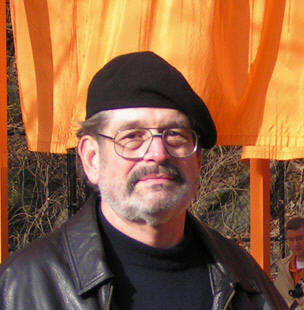 Tyr is pronounced tear as in teardrops, the stuff we sound-geeks shed when it’s time to pay for the wherewithal. I look at it this way: in a world where a big-name artist’s scribbles command bucks by the bucket, it would be boorish to snipe at the MSLPs of meticulously designed, painstakingly manufactured audio yummies. They do what they do and cost what they cost. With respect to price tags, look for no snide asides here or in subsequent columns. We’re all grownups. I tell you how I hear the review items performing, you take it from there. Or not.
Tyr is pronounced tear as in teardrops, the stuff we sound-geeks shed when it’s time to pay for the wherewithal. I look at it this way: in a world where a big-name artist’s scribbles command bucks by the bucket, it would be boorish to snipe at the MSLPs of meticulously designed, painstakingly manufactured audio yummies. They do what they do and cost what they cost. With respect to price tags, look for no snide asides here or in subsequent columns. We’re all grownups. I tell you how I hear the review items performing, you take it from there. Or not.
With three exceptions –– the Shiva, Vishnu and Brahma power cords –– Nordost has been naming its top cables after figures and a place in Norse mythology. The company’s summit line, Valhalla, celebrates the home of the gods, for the downfall of which check out Richard Wagner’s Götterdämmerung with the understanding that reports of erasure may be premature. Tyr, one price level down from Valhalla, takes its name from the war god who gave rise to Tuesday. (Etymology quiz: identify the gods for whom Wednesday, Thursday and Friday are named. Odin, Thor and Frigg, you say? Excellent! Top marks!)
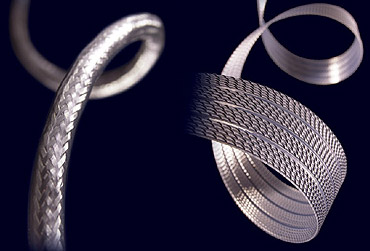 Till the Tyr speaker cable and balanced interconnect pairs arrived, I’d been using Nordost’s Valkyrja speaker cables and Valhalla interconnects. (The Valkyrja line has been discontinued.) I liked the Valkyrja speaker cable a whole lot but, when I compared them, I much preferred the Valhalla interconnect to its Valkyrja equivalent. I mention this only as an approach to my Tyr impressions, which I can characterize as “Wow!” One declines to engage in saltier expletives out of deference to readers’ sensitivities.
Till the Tyr speaker cable and balanced interconnect pairs arrived, I’d been using Nordost’s Valkyrja speaker cables and Valhalla interconnects. (The Valkyrja line has been discontinued.) I liked the Valkyrja speaker cable a whole lot but, when I compared them, I much preferred the Valhalla interconnect to its Valkyrja equivalent. I mention this only as an approach to my Tyr impressions, which I can characterize as “Wow!” One declines to engage in saltier expletives out of deference to readers’ sensitivities.
So I’m saying in language the vicar would approve that Tyr is top-drawer. In order to achieve a semblance of familiarity, I began my sessions with the balanced Valhalla interconnects I’d been using as my reference for a few years. As mentioned briefly at the end of my NuForce comments in Random Noise 4, the Tyr speaker cable struck me instantly as an ideal match to the remarkably fine NuForce Reference SE amp’s Version 2 iteration: four-square neutrality, superb resolution, transparency and speed, a remarkably smooth, coherent midrange and treble, and a stable, handsomely detailed soundstage. Not that the Valkyrja speaker cable was markedly inferior in any of these respects: with goods at these heights, it’s a question of degree, particularly if the manufacturer’s design philosophy holds coloration in contempt. (Not every designer-manufacturer does, but you knew that.) The Tyr simply made an impression I anticipate having difficulty parsing.
But they pay me to try. To remain with coloration and “character,” if it’s forgiveness you’re after –– call it sonic excelsior –– seek elsewhere. The Integris CDP, Nuforce Ref 9 SE V2 amp, Valhalla interconnect and Tyr speaker cable share a disdain for euphemized sound. What you hear is what’s on the disc. Recorded by David Hancock in 1967, a two-CD reissue of music by Aaron Copland, Charles Ives and Sergei Rachmaninoff, with Donald Johanos conducting the Dallas Symphony, didn’t live up to my memory of a gifted recording engineer’s work (VoxBox2 CDX 5035). A meticulously honest, ultra-high-rez system tells all. While Hancock’s capture of orchestral immediacy was all the more apparent, I was likewise aware of a shortfall in “air” and transparency. An otherwise lifelike recording imparted a somewhat dull, enclosed character. (The tubbiness one hears in older stereo recordings, usually as reissues, has more to do with curtailed resolution than overemphasis elsewhere.)
A cable design that faithfully conveys a disc’s contents close to the molecular level will reveal substellar resolution. It will also reveal good resolution. A sound system that tells you exactly what’s on the recording is a thing of joy and beauty –– period. I haven’t had the Valhalla speaker cable in this system for a long time and, curious to say, I’m not pining for a comparison. Tyr is that good. With “modern” understood as a span of twenty-five to thirty years, most modern recordings of the kind of music I listen to contain abundant upper midrange and treble detail. If I’m addressing the kind of listener who enjoys detecting subtle differences among production teams and venues, Tyr’s the ticket.
In our circle, “analytical” is a cuss word. While not quite as serious as a charge of infidelity, it’s not what a manufacturer wants to hear. As exquisitely detailed as it is, I’d never dream of describing the Tyr speaker cable as analytical. Of the wires I’ve had in this and other systems, Valhalla excepted, Tyr takes the prize for invisibility. I’ve played discs where the bass seems to originate in the cellar, where decays trail off to barely perceptible wisps, where huge fortes, however they rattle the bric-a-brac, retain their constituent parts, where a recording’s honeyed warmth or edge shines through like a light. In short, fabulous. No, make that flawless.
A two-meter pair of Tyr speaker cables goes for $5400. (for Valhalla at the same length, it’s $7400.) The Tyr interconnect is approximately half as expensive as the Valhalla: for the 1.5 meter length I’m using, $2245 / pair as compared with $4930 / pair. Price spread notwithstanding, the Tyr offers a convincing alternative to its big brother. Listening to an assortment of CDs I rely on for comparison, I was not aware of anything approaching a significant difference. Only when I made a direct comparison could I detect Valhalla’s advantage in a quality I’ll call “thereness.” Every audiophile will understand: to hear a difference for the better introduces dissatisfaction with anything but the very best, and yet it bears repeating: only when making a stop-the-music-and-swap-cables comparison could I claim to have heard a disparity, and it was nowhere like large. With either pair of interconnects in place for longer periods, I hesitated to say, yes, that’s Tyr and that’s Valhalla. In other words, the Tyr speaker cable and interconnect tell you what the rest of the system’s up to, down to the finest detail –– that and only that.
From a Nordost paper describing the Tyr interconnect’s innards:
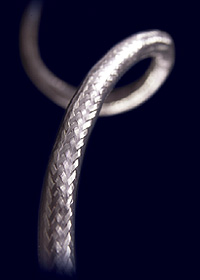 “Tyr uses four 22 AWG conductors consisting of extruded silver over oxygen-free copper. The conductors are wrapped in a Dual Mono-Filament. The filaments are first wound around each other to decrease the profile of the filament that makes contact with the conductor surface. The Dual Mono-Filaments are then wound in a helix over the conductors, in effect providing minimal insulation contact and more air space. An extruded FEP tube over the conductors and their Dual Mono-Filaments further reduces insulation contact by more than 85% with the added benefit of extreme mechanical stability. Owing to minimal insulation contact, signals travel at much higher speeds and at a tremendous bandwidth. The four conductors are wrapped around a central spacer with two silver-plated drain wires. The cable is then shielded with a dual silver braid and jacketed with a proprietary medical-grade polymer in an attractive smoked-black-over-silver color.”
“Tyr uses four 22 AWG conductors consisting of extruded silver over oxygen-free copper. The conductors are wrapped in a Dual Mono-Filament. The filaments are first wound around each other to decrease the profile of the filament that makes contact with the conductor surface. The Dual Mono-Filaments are then wound in a helix over the conductors, in effect providing minimal insulation contact and more air space. An extruded FEP tube over the conductors and their Dual Mono-Filaments further reduces insulation contact by more than 85% with the added benefit of extreme mechanical stability. Owing to minimal insulation contact, signals travel at much higher speeds and at a tremendous bandwidth. The four conductors are wrapped around a central spacer with two silver-plated drain wires. The cable is then shielded with a dual silver braid and jacketed with a proprietary medical-grade polymer in an attractive smoked-black-over-silver color.”
The 1-3/4-inch-wide Tyr speaker cable’s ribbon configuration employs similarly executed silver-over-copper wires, twenty of them in four groups of parallel five, each strand under a spiral of Micro Mono-Filament. For a more detailed idea of what this is about, go to www.nordost.com. From a subjectivist’s perspective, these are terrific cables.
Recommended recordings
Chops: as a figurative expression, a performer’s spirit, command and mastery. Were the term applied literally, e.g., pork chops, God only knows what Sylvie Courvoisier would look like. The lady has chops aplenty and huge. Her instrument is the piano. I have three Courvoisier CDs (there are more). The oldest, issued in 1999 on the Avant label (AVAN 065), features Courvoisier with Mark Feldman’s violin in duos of a distinctly improvisational character, with avant-garde jazz as a distant relation. I won’t go into it at length since it’s a tough disc to find domestically. For info, tryhttp://avant-records.blogspot.com/
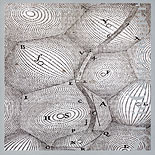 The just-released CD that got me to write this review, Sylvie Courvoisier / Signs and Epigrams (Tzadik TZ 8033), consists of ten solos that amply illustrate the pianist’s astonishing range as composer and performer. Another heartily recommended 2007 release, Sylvie Courvoisier / Lonelyville(Intakt CD 120), features the pianist with Mark Feldman, violin; Vincent Courtois, cello; Ikue Mori, electronics; and Gerald Cleaver, drums.
The just-released CD that got me to write this review, Sylvie Courvoisier / Signs and Epigrams (Tzadik TZ 8033), consists of ten solos that amply illustrate the pianist’s astonishing range as composer and performer. Another heartily recommended 2007 release, Sylvie Courvoisier / Lonelyville(Intakt CD 120), features the pianist with Mark Feldman, violin; Vincent Courtois, cello; Ikue Mori, electronics; and Gerald Cleaver, drums.
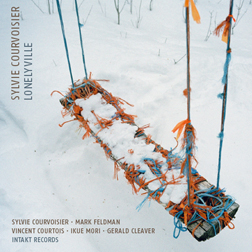 I just can’t get enough of Lonelyville. In similar fashion to Signs and Epigrams, the quartet –– the disc’s four compositions are Courvoisier’s –– engage in mind-bending displays of over-the-top invention and range, from intriguing mouse-scampers to crashing assaults. The music’s emotional aspects likewise amaze: demurely cool through romantic to extrovert-wild. Ikue Mori’s subtle, real-time electronic participation contributes significantly to the group magic. This one joins a generous handful of favorite jazz CDs. Walter Quintus recorded, mixed and mastered a sonically rewarding event. The concert took place in Lausanne, Switzerland in 2006. The Swiss-born pianist lives with her husband Mark Feldman in Brooklyn, New York.
I just can’t get enough of Lonelyville. In similar fashion to Signs and Epigrams, the quartet –– the disc’s four compositions are Courvoisier’s –– engage in mind-bending displays of over-the-top invention and range, from intriguing mouse-scampers to crashing assaults. The music’s emotional aspects likewise amaze: demurely cool through romantic to extrovert-wild. Ikue Mori’s subtle, real-time electronic participation contributes significantly to the group magic. This one joins a generous handful of favorite jazz CDs. Walter Quintus recorded, mixed and mastered a sonically rewarding event. The concert took place in Lausanne, Switzerland in 2006. The Swiss-born pianist lives with her husband Mark Feldman in Brooklyn, New York.
The solo-piano disc’s “Des signes et des songes” is one of the more rewarding “extended-technique” pieces I’ve heard. Courvoisier works inside the piano as well as conventionally to a deliciously mysterious effect. The antipodal, urgently emotional “Epigram 1” puts John Cage’s prepared-piano innovations to similarly good use, balancing the instrument’s intentionally grungy aspect against pure, untreated notes. The pianist’s astonishing dexterity is obvious throughout. A close-up, dynamic recording lightly applies reverb assists. Good stuff.
***
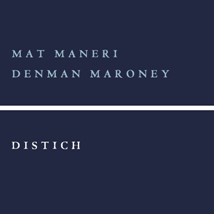 I earlier recommended Nuscope CD 1019, Chicago Approach, with Guillermo Gregorio, clarinet; Pandelis Karayorgis, piano; and Nate McBride, double-bass. This time around it’s Distich, with Mat Maneri, five-string viola; and Denman Maroney, piano (Nuscope CD 1018). Having just finished writing about Courvoisier and giving the matter a few moments of thought, I shelved the three abovementioned discs with my jazz collection. It does occur to me that the choice of category is very close to arbitrary.
I earlier recommended Nuscope CD 1019, Chicago Approach, with Guillermo Gregorio, clarinet; Pandelis Karayorgis, piano; and Nate McBride, double-bass. This time around it’s Distich, with Mat Maneri, five-string viola; and Denman Maroney, piano (Nuscope CD 1018). Having just finished writing about Courvoisier and giving the matter a few moments of thought, I shelved the three abovementioned discs with my jazz collection. It does occur to me that the choice of category is very close to arbitrary.
Despite all statements pointing to composed, Courvoisier’s music has an improvisational feel to it. When the proceedings are truly rather than seemingly improvisational, as is the case with Maneri and Maroney, category ambiguity vanishes: in fact, improvisational music-making figures large as an alternative medium among adventuresome instrumentalists. However, adventure for the sake of adventure isn’t always rewarding, at least for the listener. Much recorded improv plays as unfocused, self-indulgent pap. When it clicks, as it does here, it’s a delight. Both instrumentalists are well seasoned hands. Distich’s interplay is largely low-key, never less than poetic, often illuminating, with few wasted gestures, directions or turns. If your tastes run to mainstream jazz, you may want to exit the room at a trot. Only for the truly curious.
***

In my initial remarks about music I’m bound to mention again, I wondered why
The British-based Soli Deo Gloria label was releasing John Eliot Gardiner’s Bach Cantata Pilgrimage in other than consecutively numbered volumes. My email apparently fell through a crack. This time, not. The conductor’s wife, Isabella Gardiner, explains the curious numbering:
“We decided that the entire cycle would start with the First Sunday after Trinity as volume 1. The numbering would proceed in sequence from there, so that once the cycle was complete, the volume numbers would follow the chronological succession of the liturgical feasts through the whole year in the order in which Bach composed them. This was for two reasons: one, Bach started his Leipzig cycles on that feast; two, it was my absolutely top favourite programme. We wanted to launch the series with two really strong programmes. Volume 1 was released together with another one of my favourites, vol. 8, which contains, in my view, some of the most sublime and less known of his cantatas. Luckily others seemed to agree with our choice, as vol.1 won a Gramophone Record of the Year Award in 2005.
“The order in which release the volumes now has no real reason other than trying to keep as seasonal as possible. This year we released Easter cantatas just before Easter, for example. Last year we released cantatas for the Feast of St. Michael in October, the month in which the feast falls, though of course this will not be possible through to the end of the series as there are more feasts in the autumn than in the first part of the calendar year.
“The single CDs in the series –– two so far, one coming out this autumn –– are all of Christmas feast music. Given that the concerts performed in 2000 added up to an odd number, we could not have two-CD sets till the end, so rather than leave a lone straggler, we decided to release Christmas cantatas as ‘singles,’ which would allow buyers the opportunity of having a less expensive CD to give to their friends and families for the holidays.”
With regard to the series’ consistently good sound against long odds –– the Pilgrimage’s many and various venues –– Isabella Gardiner explains: “We hired Polyhymnia, a fantastic firm of recording engineers. They built a mobile recording van which followed the tour around Europe. It took almost five years after that to raise funds which allowed us to begin the series’ release, and for that we have our project’s patron, HRH the Prince of Wales, to thank for helping us achieve our goals.”
I also mentioned in those earlier comments that Archiv, a Deutsche Grammophon label, dropped the series that Soli Deo Gloria resumed. For an exhaustive discussion of stale news, go to www.bach-cantatas.com/Performers/Gardiner-Gen5.htm. Like Aunt Emily’s gift of a book about the prairie dog’s diet, the link will tell you more than you probably wanted to know.
Putting all that aside, Isabella Gardiner mentions vol. 8 as a favorite. A suggestion: acquire the eighth volume and play BWV 8, “Liebster Gott, wenn werd ich sterben?” If you don’t agree that this cantata contains some of the world’s loveliest music, feel free to rebuke my misdirected enthusiasm. Sticks and stones: I will not reimburse dissatisfied listeners. Also, readers who favor hip-hop, R&B, cabaret, Broadway, John Williams’ movie scores, Paul McCartney’s classical anything, country-&-western (with exceptions), rock in all its pebbled forms (likewise with exceptions), etcetery, und so weiter, would do well to ignore this recommendation.
See you next month. Drink responsibly. Keep out of drafts.

![]()
Don’t forget to bookmark us! (CTRL-SHFT-D)
Stereo Times Masthead
Publisher/Founder
Clement Perry
Editor
Dave Thomas
Senior Editors
Frank Alles, Mike Girardi, Key Kim, Russell Lichter, Terry London, Moreno Mitchell, Paul Szabady, Bill Wells, Mike Wright, Stephen Yan, and Rob Dockery
Current Contributors
David Abramson, Tim Barrall, Dave Allison, Ron Cook, Lewis Dardick, Dan Secula, Don Shaulis, Greg Simmons, Eric Teh, Greg Voth, Richard Willie, Ed Van Winkle, and Rob Dockery
Music Reviewers:
Carlos Sanchez, John Jonczyk, John Sprung and Russell Lichter
Site Management Clement Perry
Ad Designer: Martin Perry





Be the first to comment on: Random Noise 05